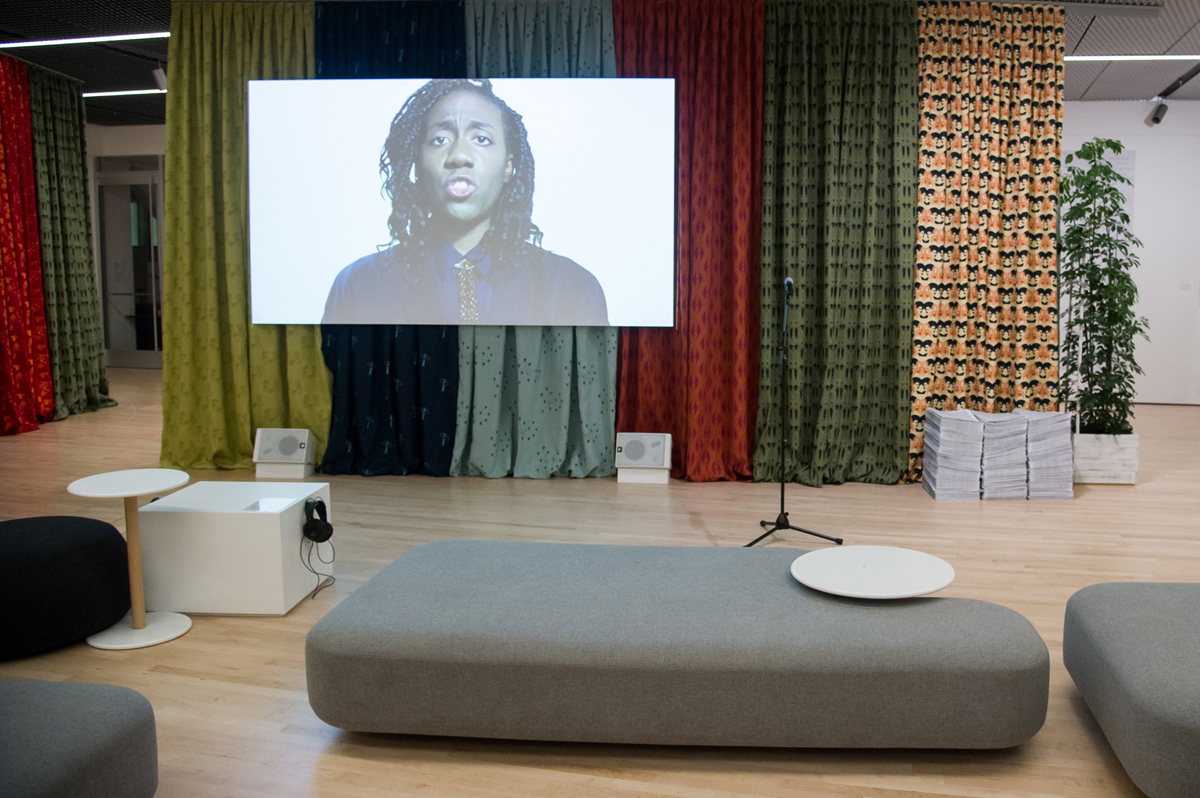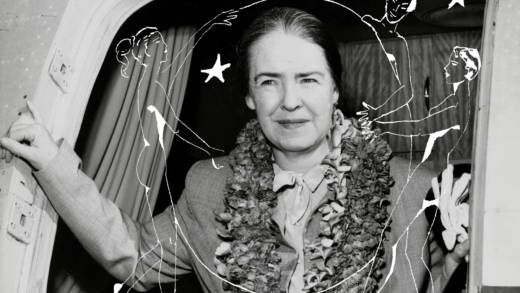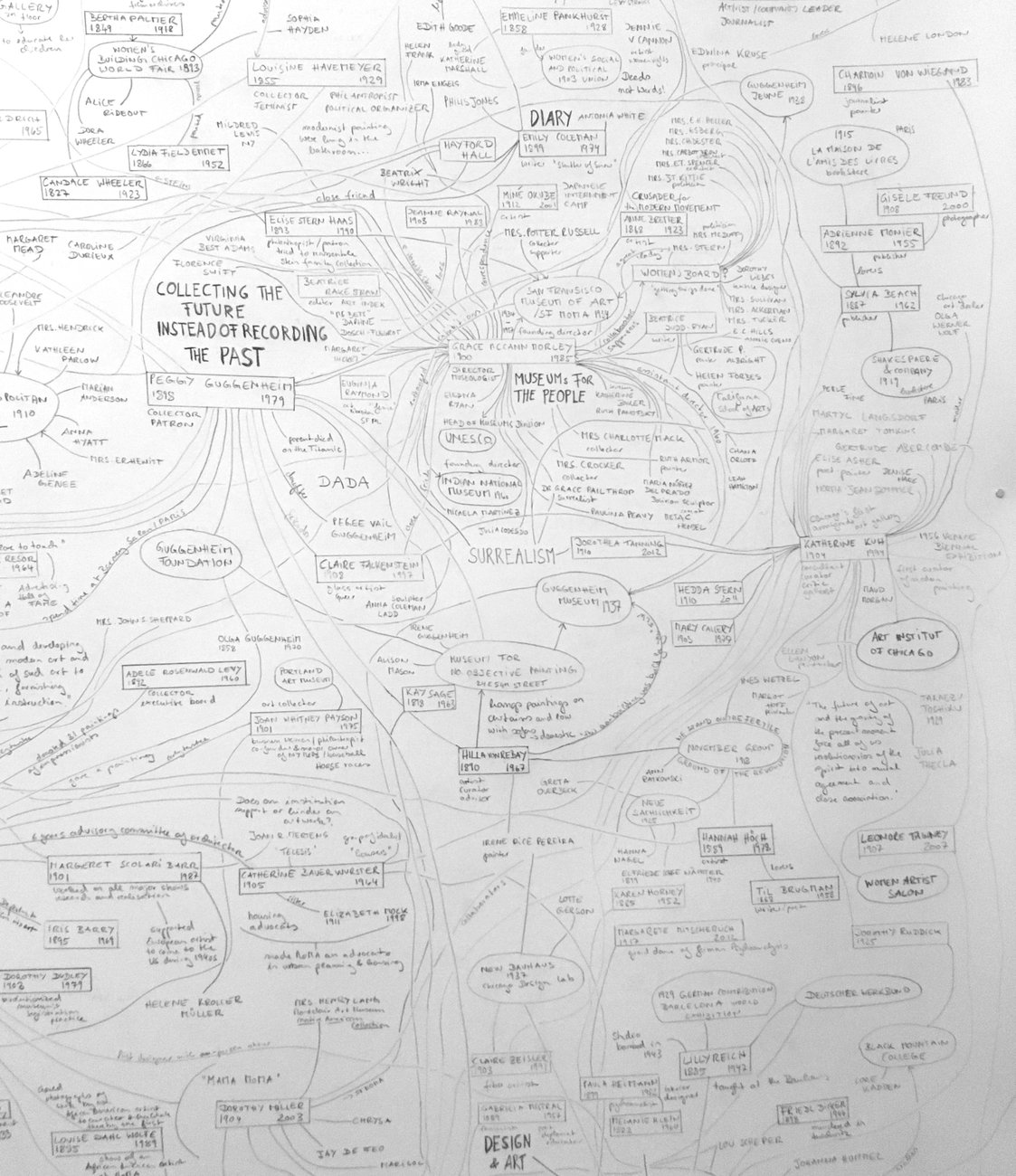Imagine you’re at the San Francisco Museum of Modern Art. Imagine, to be exact, that you’re in the center of the Helen and Charles Schwab Hall. Sol LeWitt’s Wall Drawing 895: Loopy Doopy (white and blue) undulates around you, beckoning upwards to the thousands of square feet of galleries above. The only question now is where to start.
Choose your own adventure. You can: A) take the stairs straight to the third floor’s not-to-be-missed Diane Arbus show and work your way up from there; or B) take an elevator right to the top, to the seventh floor’s excellent trio of exhibitions, and work your way down.
You can’t go wrong, you think. But you would be mistaken, because there’s a secret, hidden, not-so-obvious third option in this museum adventure, and it’s C) don’t go anywhere.
That’s because the Koret Education Center, located just off the second-floor lobby, contains more than just cubbies full of museum-going students’ backpacks. It’s currently the site of a small exhibition by New York-based artist Andrea Geyer, To Those Who Have Eyes to See, an installation devoted to the legacy and ideals of Grace McCann Morley, SFMOMA’s founding director.

Geyer’s installation includes floor-to-ceiling textiles, a remapped history of modernism focusing on women’s contributions to the movement, images from a women’s march, a video reenactment of Morley’s hopes for the museum, and — a modern museum taboo — plants.




